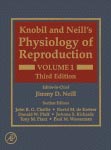Chapter 22 - The Epididymis
B Robaire, BT Hinton, MC Orgebin-Crist
Plates (1st Edition)
Fig. 46
Basal region of a principal cell of the caput epididymis
Fig. 47
Apical and supranuclear regions of a principal cell of the corpus epididymis
Fig. 48
Supranuclear region of a principal cell of the corpus epididymis
Fig. 49
Basal region of a principal cell of the corpus epididymis demonstrating an abundance of lipid droplets (LIP)
Fig. 50
Principal cell of the cauda epididymis
Fig. 51
A principal cell of the cauda epididymis showing a slender foot-like process contacting the basement membrane (arrow) and interdigitations (arrowhead) with a basal cell (B)
Fig. 52
A principal cell of the distal segment of the vas deferens
Fig. 53
High power of the supranuclear region of a principal cell seen in Fig. 52
Fig. 54
High power of the basal region of a principal cell seen in Fig. 52
Fig. 55
Apical region of a principal cell of the vas deferens showing coated pits (Cp), large coated vesicles (Cv), smooth-surfaced vesicles (asterisks), and small coated (arrows), and uncoated (arrowhead) vesicles
Fig. 56
The supranuclear region of a principal cell of the vas deferens
Fig. 57
High power of a Golgi stack of saccules (S) showing on its cis face (C) interruptions of the saccules forming wells (arrows) in which are located small vesicles
Fig. 58
A montage of a pencil cell within the epithelial lining of the vas deferens
Figs. 59-61
Apical and supranuclear regions of a narrow cell of the initial segment of the epididymis
High power of the apical region of a narrow cell showing numerous small C-shaped vesicles often appearing as double-walled structures (arrowheads) and glycogen granules (circles)
High power of the apical region of a narrow cell containing a pale multivesicular body (asterisk) and numerous small C-shaped vesicles (arrowheads)















